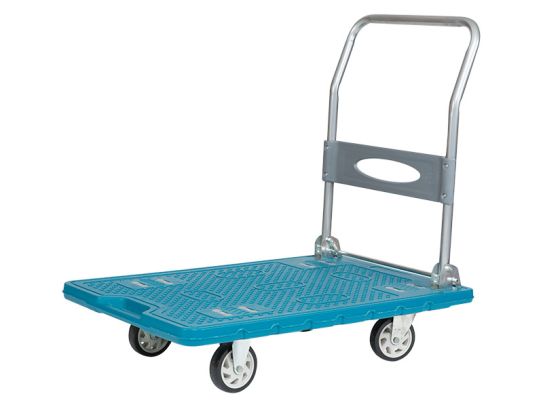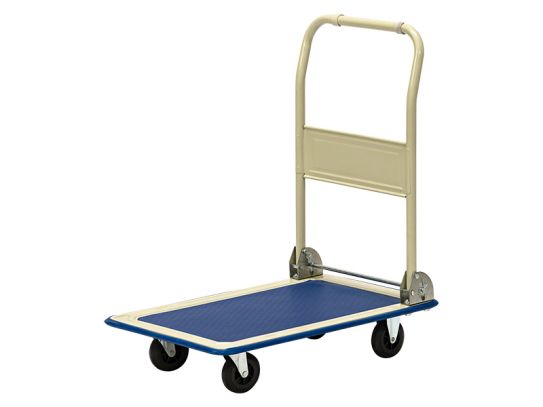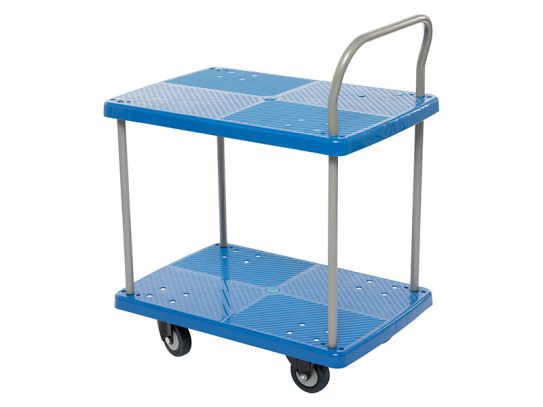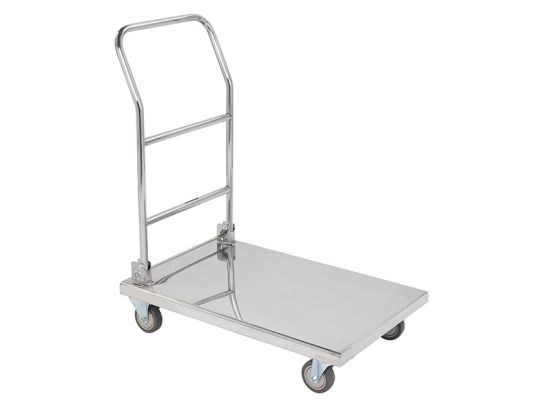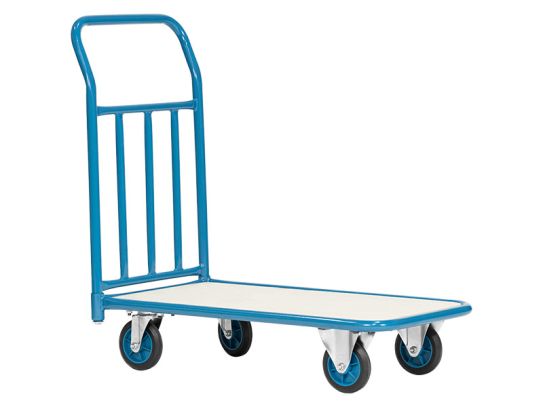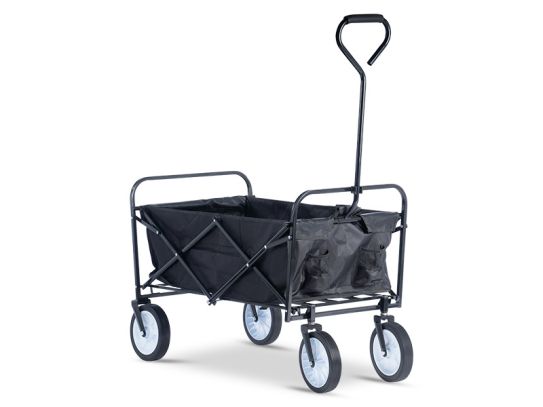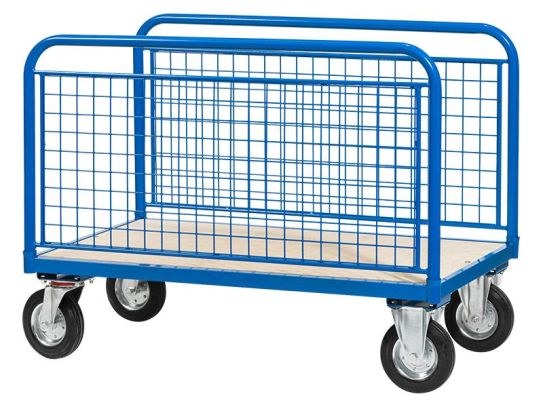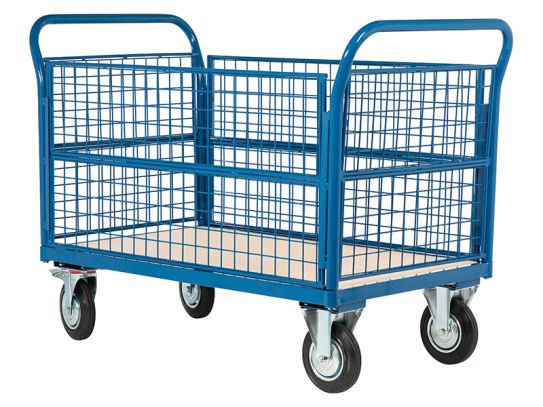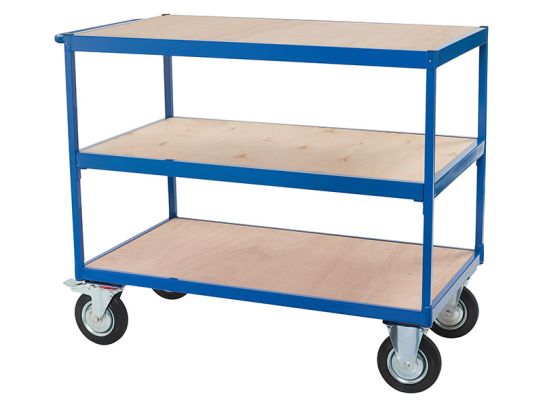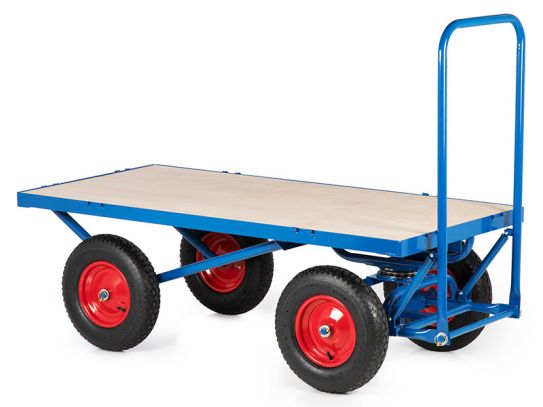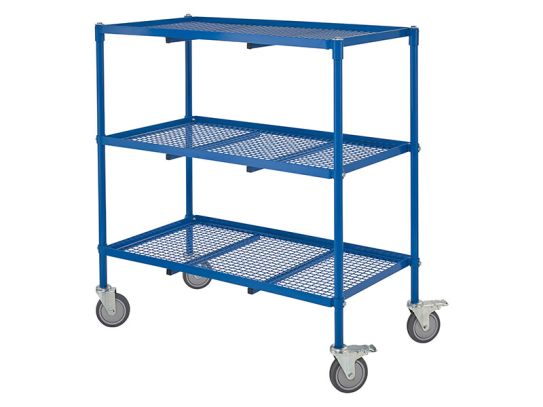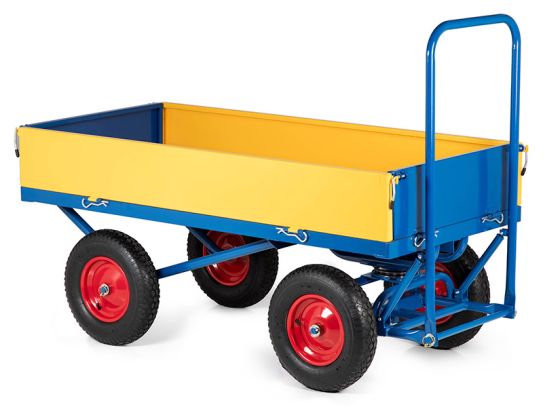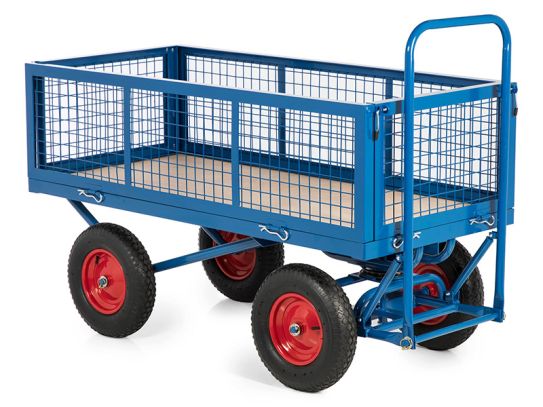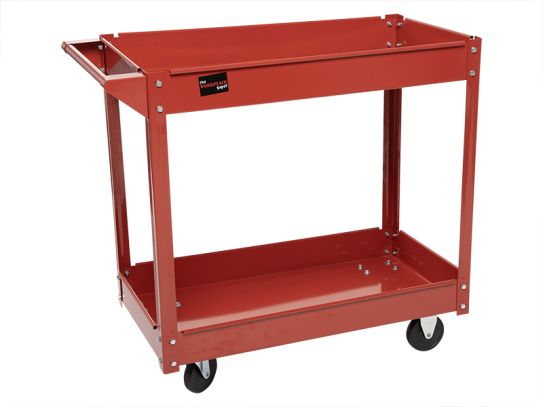Platform Trolleys
Discover the Power of Platform Trolleys – the Perfect Tool for Transporting Heavy Items with Ease
Are you tired of struggling to transport heavy items from one place to another? Our platform trolleys are the perfect solution! With their sturdy construction and large surface area, these trolleys make it easy to move items of all shapes and sizes. Whether you're a business owner, a warehouse worker, or simply someone who needs to move heavy items around your home, our platform trolleys are the perfect tool for the job.
Our trolleys are made of high-quality materials and are built to last. They're also easy to maneuver, thanks to their sturdy wheels and smooth-rolling design. Plus, they come in a range of sizes to fit your specific needs.
With our platform trolleys, you'll be able to move heavy items with ease. No more struggling to carry awkward objects or risking injury by trying to lift something that's too heavy. Just load your items onto the trolley, and let the trolley do the work for you!
What Is a Platform Trolley?
A platform trolley is a type of cart with a flat surface that is used to transport goods or materials from one location to another. It typically has four wheels and is pushed or pulled by hand, making it easy to move heavy or bulky items around a warehouse, factory, or other workplace. Some platform trolleys may also have additional features, such as a handle for steering, a railing to prevent items from falling off, or locking casters to keep the trolley in place when it is not in use.
How Are Platform Trolleys Typically Used?
Platform trolleys are typically used in warehouses, factories, and other industrial or commercial settings to transport heavy or bulky items. They are often used to move materials such as boxes, crates, or pallets of goods from one location to another, or to transport finished products from a production area to a storage or shipping area. Platform trolleys can also be used in other settings, such as hospitals, schools, or offices, to move equipment, supplies, or furniture. In some cases, they may be used by maintenance or custodial staff to transport tools or cleaning supplies.
What Are the Benefits of a Platform Trolley?
There are several benefits to using a platform trolley, including:
- They can make it easier to transport heavy or bulky items, reducing the risk of injury to workers.
- They can help to speed up the movement of goods or materials within a workplace, improving productivity.
- They can help to reduce the need for forklifts or other heavy machinery in some cases, which can save on operating costs and reduce the risk of accidents.
- They are typically more affordable than other types of material handling equipment, making them a cost-effective option for many businesses.
- They are versatile and can be used in a variety of settings, including warehouses, factories, hospitals, schools, and offices.
Overall, platform trolleys can help to improve safety, efficiency, and cost-effectiveness in a wide range of workplaces.
What Are the Different Types of Platform Trolleys?
There are several different types of platform trolleys, each designed for specific uses or applications. Some of the most common types include:
- Standard platform trolleys: These are the most basic type of platform trolley, with a flat surface and four wheels. They are typically used to transport boxes, crates, or other items in warehouses, factories, or other industrial settings.
- Folding platform trolleys: These trolleys have a hinged platform that can be folded up or down, allowing them to be easily stored when not in use. They are often used in retail or other settings where space is limited.
- Nesting platform trolleys: These trolleys have a platform that can be nested inside another trolley, allowing multiple trolleys to be stacked and stored when not in use. They are often used in warehouses or other settings where space is at a premium.
- Sack truck trolleys: These trolleys have a platform with a backrest that can be used to support bags or other items that would not normally fit on a standard platform trolley. They are often used in warehouses or other settings where sacks or bags are frequently transported.
- Adjustable platform trolleys: These trolleys have a platform that can be adjusted to different heights or angles, allowing them to be used for a wider range of applications. They are often used in factories or other settings where items of different sizes or shapes need to be transported.
Overall, the type of platform trolley you choose will depend on your specific needs and the types of items you will be transporting.
How Do You Operate a Platform Trolley?
To operate a platform trolley, follow these steps:
- First, make sure that the trolley is in good working condition, with all wheels and other components securely attached and functioning properly.
- Place the items you want to transport onto the flat surface of the trolley, making sure they are evenly distributed and stable.
- If the trolley has a handle, grasp it firmly with both hands and use it to steer the trolley in the direction you want to go. If the trolley does not have a handle, push or pull on the edge of the platform to move it.
- Keep a firm grip on the handle or platform at all times and avoid letting go, as this could cause the trolley to tip or the items on it to fall off.
- Use caution when moving the trolley around corners or in tight spaces, and avoid colliding with walls, other objects, or people.
- When you reach your destination, use the handle or platform to bring the trolley to a stop. If the trolley has locking casters, engage them to keep the trolley in place.
- Carefully unload the items from the trolley, taking care not to drop or damage them.
Overall, operating a platform trolley requires attention to detail and caution to ensure the safety of both the operator and the items being transported.
Are There Any Safety Issues with Platform Trolleys?
Yes, there are several safety issues to be aware of when using a platform trolley. Some of the most common include:
- Risk of injury: Improper use of a platform trolley can lead to strain or injury to the operator. This can occur if the trolley is overloaded, if the items on it are not properly secured, or if the operator tries to move the trolley in an unsafe manner.
- Risk of falling: If items on a platform trolley are not properly secured, they may shift or fall off, which can cause injury to the operator or anyone nearby.
- Risk of collision: Platform trolleys can be difficult to manoeuvre, especially in tight spaces or around corners. If the operator is not careful, the trolley may collide with walls, other objects, or people, which can cause damage or injury.
- Risk of tipping: Platform trolleys are designed to be stable, but if they are overloaded or used improperly, they may tip over. This can cause the items on the trolley to fall off and potentially cause injury to the operator or anyone nearby.
To avoid these safety issues, it is important to use a platform trolley properly and to follow all safety guidelines provided by the manufacturer. This includes ensuring that the trolley is in good working condition, that it is not overloaded, and that the items on it are properly secured. It is also important to use caution when moving the trolley and to avoid colliding with other objects or people.
How Do I Maintain My Platform Trolley?
To maintain your platform trolley, follow these steps:
- Regularly inspect the trolley for any signs of damage or wear, such as loose or missing wheels, bent or broken handles, or other issues.
- If you notice any damage, have it repaired by a qualified technician as soon as possible to prevent further wear or potential accidents.
- Keep the trolley clean by regularly wiping down the platform and other surfaces with a cloth or brush. This will help to remove any dirt or debris that could interfere with its smooth operation.
- Lubricate any moving parts, such as wheels or casters, to keep them working smoothly and reduce wear.
- Store the trolley in a dry, secure location when it is not in use to protect it from damage or theft.
Regular inspection and maintenance can help to ensure that your platform trolley stays in good working condition and continues to operate safely and efficiently.
Do Different Types of Wheels Affect the Performance of the Platform Trolley?
Yes, the type of wheels on a platform trolley can affect its performance. Different types of wheels have different characteristics, such as size, weight, durability, and rolling resistance, which can impact the trolley's ability to move smoothly and easily. For example, larger wheels may provide better traction and be able to handle rough or uneven surfaces better than smaller wheels. However, they may also add to the weight and size of the trolley, making it more difficult to manoeuvre.
In contrast, smaller wheels may be easier to manoeuvre, but may not provide as much traction or be able to handle rough surfaces as well. Therefore, it is important to choose the right type of wheels for your specific needs and the types of surfaces you will be using the trolley on.
Are There Any UK or European Industry Standards or Regulations That Apply to Platform Trolleys
Yes, there are several UK and European industry standards and regulations that apply to platform trolleys.
In the UK, platform trolleys are covered by the Provision and Use of Work Equipment Regulations (PUWER), which set out requirements for the design, construction, and use of work equipment, including trolleys. In addition, the Health and Safety Executive (HSE) has published guidance on the safe use of trolleys, which provides information on how to avoid common risks and hazards associated with their use.
In the European Union, platform trolleys are covered by the Machinery Directive, which sets out requirements for the design and construction of machinery, including trolleys. The directive requires that trolleys be designed and built in a way that minimises the risk of injury to operators and other users, and that they be accompanied by appropriate instructions for use.
